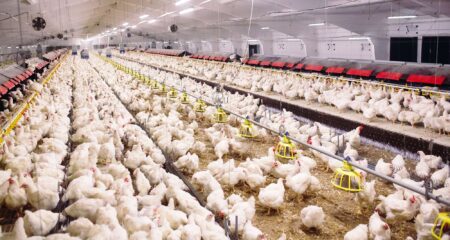In its latest Crop Progress report, the USDA rated 74% of the corn crop in the top 18 corn-growing states good/excellent. It’s the highest combined percentage for this time of year since 2016.
Not all states are experiencing historically high numbers when it comes to the condition of their corn crops.
Half the top 18 corn-growing states had good/excellent percentages below the 74% national average the week that ended July 13. Three of those had good/excellent percentages of 62% or less.
Here’s a look at the nine states with good/excellent percentages below the national average, beginning with the worst.
Michigan
The only top corn-growing state with less than half its corn crop in good/excellent shape is Michigan. Only 49% of its corn fell into the combined category for the week that ended July 13.
USDA rated most of the rest of the crop — 40% — fair, while 10% was rated poor and 1% was rated very poor.
Just 21% of Michigan’s corn had progressed to the silking stage by July 13, and none had reached the dough stage.
Ohio
Ohio ranked second for worst corn. Just 56% of the Buckeye State’s crop fell into the good/excellent category. Fair corn made up 38%, while poor/very poor corn made up the rest — 6%.
As for the progress of the crop, 21% had reached the silking stage, and none was at the dough stage as of July 13.
Indiana
Indiana rounds out the three states with the worst corn. USDA rated 62% of the state’s corn good/excellent for the week that ended July 13. Just over a quarter was rated fair, and 11% was rated poor/very poor.
Thirty-one percent of Indiana’s crop was silking by July 13, USDA said, while 1% had reached the dough stage.
Other States
The other six states with good/excellent percentages below the 74% national average had combined percentages between 68% and 70%.
USDA rated 68% of the corn in both Illinois and North Dakota good/excellent.
Kansas, Kentucky, and Tennessee all had 69% good/excellent corn.
Texas was the final state whose good/excellent corn percentage fell under the national average. Seventy percent of its corn fell into the combined category.


:max_bytes(150000):strip_icc()/IMG_7936-c12c642ad0064146a4aecfc1a60502a3.jpeg)
:max_bytes(150000):strip_icc()/HTTJohnDeeretractorwithtillage_preview-6e8cfa3643f043efb29085bd78d76c98.jpg)
:max_bytes(150000):strip_icc()/Canadian20flag48553671412_aeb0538794_c-0bfa123de2b54e30ab4fadecae382d4a.jpg)


:max_bytes(150000):strip_icc()/2208-05-069_farm_field-60709d925c37418e82f16ede939a20a0.jpg)


:max_bytes(150000):strip_icc()/WheatField-CloseUp-2000-bc79406da4004a2d94bcb2c32153cc3a.jpg)